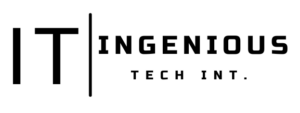key takeaways
Proactive Approach: In the modern cybersecurity landscape, a proactive approach focusing on cloud security detection and response is crucial to thwart threats before they escalate.
Challenges of Legacy Systems: Legacy detection systems often suffer from limited visibility, high false positives/negatives, and an inability to detect insider threats, highlighting the need for advanced solutions.
Key Components: Effective cloud security detection and response rely on components such as access control, intrusion detection systems, and security information and event management (SIEM).
Benefits of Comprehensive Strategy: A comprehensive strategy offers benefits such as enhanced threat visibility, advanced threat detection, and proactive threat hunting, enhancing overall security posture.
Role of Automation: Automation plays a vital role in cloud security, accelerating response times and reducing human error, making it a valuable tool in modern security practices.
In today’s digital era, the reliance on cloud infrastructure has become ubiquitous. As organizations increasingly migrate their operations to the cloud, the importance of robust cloud security detection and response mechanisms cannot be overstated. This article explores the evolving landscape of cloud security and the proactive strategies required to safeguard valuable data.
Understanding the Cloud Threat Landscape
Staying ahead of the curve: The significance of threat detection and response in the modern cybersecurity landscape
The modern cybersecurity landscape is marked by its rapid evolution. Threat actors are becoming increasingly sophisticated, making it crucial for organizations to adopt proactive measures.
Beyond Prevention: Moving past traditional approaches
Traditional security approaches often focus solely on prevention. However, this mindset is no longer sufficient. It’s imperative to move beyond prevention and embrace a holistic approach.
From false alarms to missed threats: Solving the challenges of legacy detection systems
Legacy detection systems suffer from various limitations, including limited visibility, high false positives and negatives, and an inability to detect insider threats. Overcoming these challenges is a priority.
Key Components of Cloud Security Detection and Response
To establish a robust cloud security framework, it’s essential to understand the key components that make up the detection and response ecosystem.
Cloud Access Control
Controlling access to cloud resources is fundamental in preventing unauthorized breaches.
Intrusion Detection Systems (IDS)
Intrusion detection systems play a pivotal role in identifying abnormal activities within the cloud environment.
RELATED
- Commercial Intrusion Detection Solutions: The Battle-Tested Armor Your Business Needs
Security Information and Event Management (SIEM)
SIEM tools provide real-time insights into security events, enabling rapid response.
Benefits of a comprehensive threat detection and response strategy
Enhanced Threat Visibility
Comprehensive threat detection offers unparalleled visibility into potential threats, helping organizations stay proactive.
Advanced Threat Detection
Advanced detection mechanisms can identify even the most sophisticated threats.
Proactive Threat Hunting
Proactive threat hunting allows organizations to seek out potential threats before they escalate.
Efficient Incident Response
Efficient incident response is critical in minimizing the impact of security breaches.
Real-time Log Analysis
Real-time log analysis helps in identifying anomalies as they occur.
Data Encryption
Encrypting data ensures that even if a breach occurs, the data remains secure.
Multi-Factor Authentication (MFA)
Implementing MFA adds an extra layer of security to cloud access.
Incident Response and Containment
In the event of a security incident, having a well-defined incident response plan is essential.
Escalation Procedures
Clear escalation procedures ensure that the right personnel are alerted promptly.
Isolation and Remediation
Isolating affected systems and remediating vulnerabilities are critical steps in containing a breach.
The Role of Automation in Cloud Security
Automation streamlines incident response, reducing manual intervention and response times.
Training and Awareness
Employee training and awareness programs are integral in preventing security lapses.
Compliance and Regulation
Staying compliant with industry regulations is non-negotiable in cloud security.
Case Studies: Successful Cloud Security Strategies
Real-world examples illustrate how effective cloud security strategies have protected organizations from potential disasters.
Future Trends in Cloud Security
As technology evolves, so do cybersecurity threats. Exploring upcoming trends can help organizations prepare for the future.
Conclusion
In an era where cloud infrastructure powers businesses worldwide, cloud security detection and response have become indispensable. Organizations must move beyond traditional approaches and embrace proactive strategies to safeguard their digital assets. By leveraging advanced technologies, maintaining awareness, and adhering to compliance standards, organizations can navigate the evolving cloud threat landscape with confidence.
FAQs
What is the significance of cloud security detection and response in modern cybersecurity?
Cloud security detection and response are vital in modern cybersecurity as they proactively identify and mitigate threats before they escalate into major breaches, ensuring the safety of valuable data.
What are the challenges associated with legacy detection systems mentioned in the article?
Legacy detection systems face challenges like limited visibility into cloud environments, high false positives/negatives, an inability to detect insider threats, and a reactive approach to security incidents.
What are the key components of cloud security detection and response highlighted in the article?
Key components include cloud access control, intrusion detection systems (IDS), and security information and event management (SIEM) solutions, which collectively enhance cloud security.
What are the benefits of implementing a comprehensive threat detection and response strategy, as mentioned in the article?
A comprehensive strategy offers benefits such as enhanced threat visibility, advanced threat detection, proactive threat hunting, efficient incident response, real-time log analysis, data encryption, and multi-factor authentication (MFA).
How does automation contribute to cloud security, as mentioned in the article?
Automation plays a crucial role in cloud security by accelerating response times, reducing human error, and enabling swift identification and mitigation of threats, thus enhancing overall security measures.


